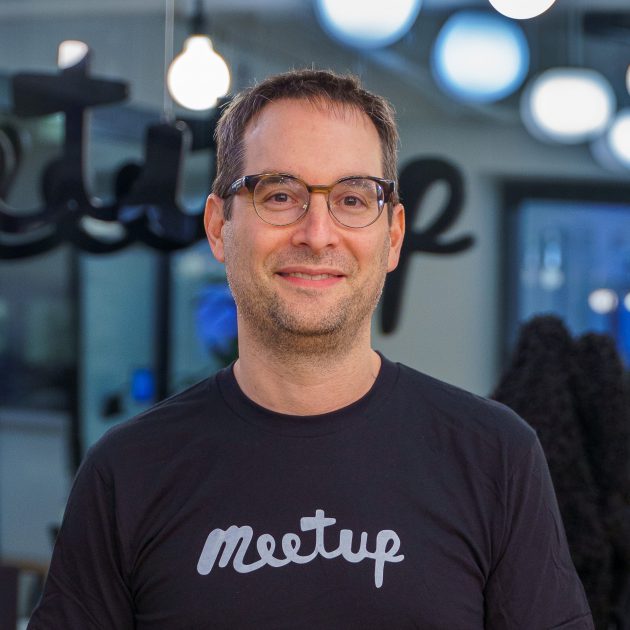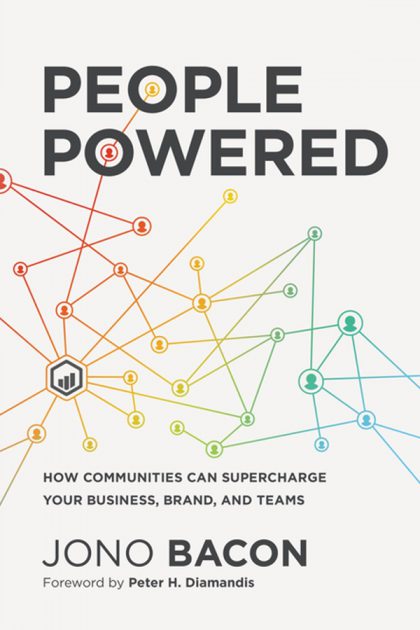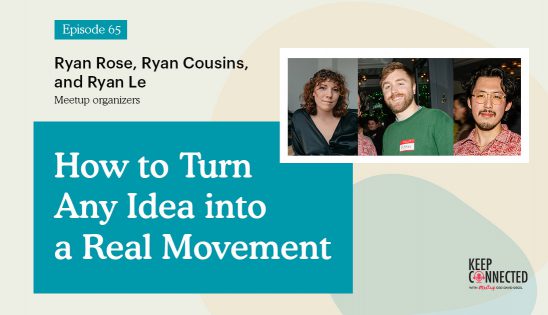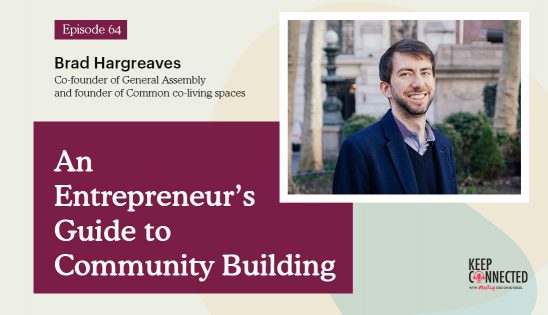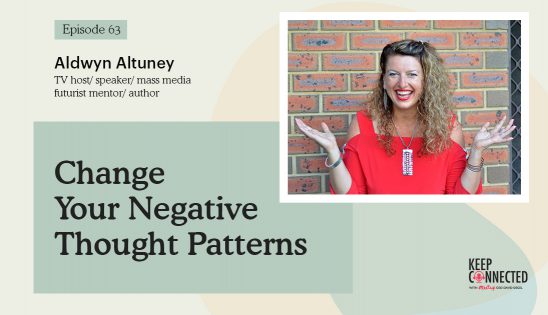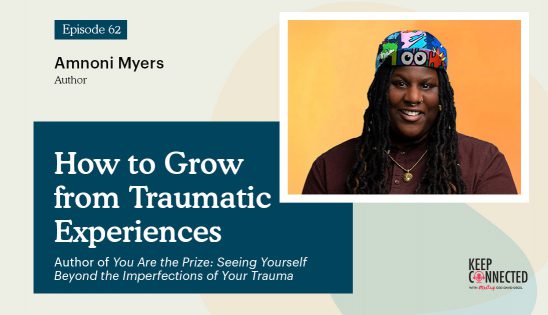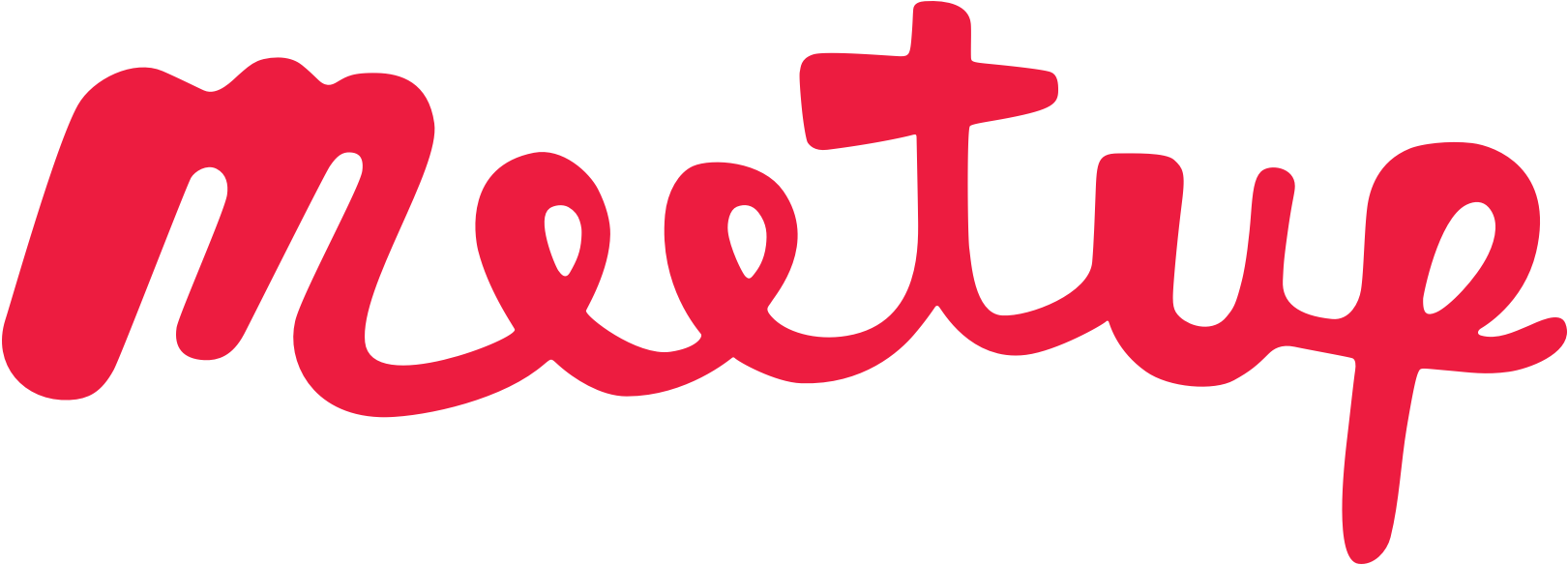“When you have a community that’s passionate about what you are doing, you have unlimited levels of growth, insight, and expertise.” —Jono Bacon
In the first episode of Keep Connected, Meetup CEO David Siegel interviews author, blogger, and community building expert Jono Bacon. For Jono, successful community building begins by offering solutions to a common problem. Tune in for lessons on incentivizing behavior, meaningful metrics, book recommendations, and more!
You can subscribe to Keep Connected on Apple Podcasts, Google Podcasts, Spotify, or wherever you listen.
Ranked as one of the top 25 CEO podcasts on Feedspot, Keep Connected with Meetup CEO David Siegel is a podcast about the power of community. For more details on other episodes, visit Keep Connected on the Meetup Community Matters blog.
We hope you’ll keep connected with us. Drop us a line at podcast@meetup.com. If you like the podcast, be sure to subscribe and leave us a rating on Apple Podcasts!
Learn more about Keep Connected host David Siegel’s experience as a leader and decision maker in his book, Decide & Conquer. Pre-order your copy today!
Show notes:
Jono Bacon, welcome to the show.
It’s great to be here, David. How are you doing?
Life is good. I can’t complain.
It’s all good. Here we are again on the internet.
Jono, you are a community maestro, a sensei, a guru. We’re going to talk about all the things that you’ve done with community but first, of the maestro, sensei, guru, which do you like? What should I call you?
I’m happy with all of them at this point. Guru sometimes makes me think of those get rich quick marketing gurus. Maybe not that, but the rest of them is good. I like sensei.
You are the sensei. I love it. Let me tell everyone here why Jono Bacon is the sensei. He has written numerous books, The Art of Community is one. He has his own podcast and he interviews amazing individuals. Somehow I got on there, lucky me. It was a fun and wonderful experience. You’ve spoken to Meetup employees. You’ve spoken at Meetup groups. You’re a community leader to hundreds of different companies who you advise. You’ve been published in HBR. I don’t know what you haven’t done but I do know that oftentimes, anything that people do is because of an inspiration. I’m interested in understanding your inspiration around community. What do you think that goes back to?
Oftentimes anything that people do is because of inspiration.
For me, I first discovered it back in the late ‘90s when I first got into open source. I learned about people all over the world coming together to build technology. When we discover things, we don’t understand them. When I started getting into it and thinking about it, what unlocked it for me was that I think we’re a social species and we are better together. The very best of the human condition comes out when we have a shared purpose, and we’ve got an opportunity to contribute to that shared purpose together. If you look at a typical company that’s got 50 employees, you’re limited to those resources. When you have a community that’s passionate about what you’re doing, you have unlimited levels of growth, insight and expertise. When it’s well facilitated, we’ve seen it time and time again, we get phenomenal results. The challenge is that it’s complicated to build communities. My goal is to try and simplify that so people can do it more effectively.
Let’s talk about that complication a little bit. Why do you think it’s complicated to build communities? I’d love to hear that first, and then maybe a little bit about how that could be simplified?
First of all, the word community means many different things to different people. It can be anything from a knitting circle or a book club, right up to a large technology movement. When we build it, there are all of these different elements, which tools, platforms and workflow, what incentives, what’s the role of content, how do you build growth, and how do you engage people? There are a lot of variables that get thrown into the mix. Where it gets increasingly complicated is first of all, there’s a decision paralysis. How do I even get started? What’s the first thing that I need to focus on. Also, when you start seeing the initial results coming in, often the initial results aren’t what you expected because communities take a while to get up and running. Most people don’t have a sense of what the norm should be.
One of the big questions I get from clients is, “What is normal?” I don’t know what normal is. When we can break it down into a crisper framework, for these are the stages that you go through, and this is what’s normal for each of those stages. It won’t be perfect in all situations but it gives people a little bit better sense of what to do. In terms of how I’m resolving this is to break it into that more of a framework. For example, I like to define audiences first. What are their pain points? What do they struggle with?
How do we onboard them to a first piece of value, so they get something out of the community that’s useful to them? How do we get them to go from being casual members where they’re brand new? They don’t know anyone. They got a lot of imposter syndrome to them becoming regulars, where they’re showing up every week. They’re passionate. They know people and they feel part of something. The final stage is usually core members who are eager. They are your super fans. How do we use incentives to move people through those three different phases? That’s the baseline that I approach.
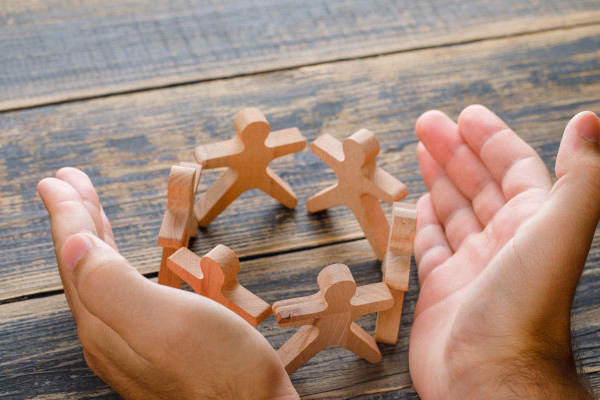
You hit on so many things. Let’s hear a specific example. Give me an example of a community that’s either succeeded. It’s okay to share one that had challenged and failures. Some challenges that they had in the beginning because of unrealistic expectations, whatever the challenges might be. I’d love to hear a specific example.
There are lots of examples of communities that have done well. Harley Davidson has got 1,700 local user groups around the world. Salesforce and SAP have got million-plus member communities. One that jumps out to me is a community called Kubernetes, which is a technology platform. What is interesting about this is at the time that it formed, there were lots of companies trying to build, make it easy for people to put things in the cloud. Kubernetes formed as this center point where lots of companies started getting involved. Lots of individual community members started getting involved. What they did is they started with something that was valuable to the group. That was the software. They created a first cut of this piece of software. That was the thing that started pulling people in. People would say, “Why don’t we have these features. Those features, I found these bugs and these errors.” Gradually, everyone started to relate around that center point.
To get that coagulation, do you need to have the right product in the beginning, whether it’s Harley Davidson and their product or Salesforce? Does it all start with having the right product or can you build community in the absence of a particularly special product or experience?
There’s got to be a unifier. The unifier for many communities is a product. It’s a service. For many, it’s a cause. It can be activism or it could be a problem. It could be breast cancer, for example. There are many breast cancer support networks. I know there are many Meetups around the world that focus on supporting people who are suffering with breast cancer. There’s got to be something that pulls people in. We all know that “if you build it, they will come” doesn’t work, but we still tend to fall into that mindset. This is one of the reasons why I like to focus on who are your audience on what is the pain that they’ve got. If we can present solutions to pain and roadblocks, it’s inherently more attractive to people. If you’ve got something that you believe other people are going to have a shared interest in, whether it’s a product, a mission, or a medical issue, and you can identify the pain points, then you’ve got the baseline for what a community is going to need.
It’s all about a problem-solution mindset. You spoke about breast cancer support groups. I’m quite friendly with the head of Houston’s breast cancer support group. She’s so inspiring when she talked to me. She’s told me that she saved dozens of women’s lives and helped them in their treatments, and share alternative treatments. It’s the community that provides that inspiration and support.
What’s so powerful about this is to me, everything boils back down to the human condition. I often use this comparison. If you want to build a great piece of technology, you need to understand the tools that you’re using. If you want to be a great chef, you need to understand the ingredients and how they come together. What makes communities tick is the sense of connection that we’re a social species. In many cases, I know you shared this with me, David, but I’m sure everybody who’s reading this have experienced this. Someone can say one thing and it will completely change your outlook and perspectives. One little statement.
The thing I love about communities is it amplifies the potential of hearing those statements. John Cleese of Monty Python fame once said, “Success is all about luck.” It’s literally down to luck but if you keep trying, if you keep doing new things, you increase the chances of having luck, and therefore being successful. With communities, when you bring people together with a shared mission, a shared purpose, and they’ve got the ability to engage, you increase the likelihood of having those a-ha moments. That’s why they’re so valuable. You then get stories like your friend who can have such an impact because the community was able to bring people in.
When you have a community that’s passionate about what you’re doing, you have unlimited levels of growth, insight, and expertise.
Luck is hard work. It’s something that I say quite often. It’s amazing how community creates all these opportunities. It creates options for people to be able to get different perspectives and different exposures that they wouldn’t necessarily have gotten beforehand. You said it well. Let’s talk a little bit about either of your two books. I don’t know if there’s a cliff notes version of it yet but if you don’t mind, share with us the high-level cliff notes. If you are going to share the book on one foot and say, “This is the most critical learning.” Having read them, I’d love to hear what you would say.
The first book I wrote was The Art of Community. When I wrote that many years ago, my goal here was there wasn’t anything practical written down. There were lots of books on social science of communities, which I find interesting to a degree and then I get bored with that stuff. There wasn’t a how-to guide or how to get started. That was my thesis. That was my approach to doing it. It’s very focused on technology because that’s all I knew back then. In 2019, I released People Powered and that was designed to be a business book because I was having a lot of companies coming to me and saying, “I bought your book The Art of Community. I’m looking forward to getting started.” The Art of Community is a 600-page book now. It’s heavy. It’s intended for people who are community managers who are on the ground doing this stuff.
I want to write something that you could pick up at an airport and read on an airplane. It’s 280 pages. It’s a typical business book, but I can’t stand most business books because they teach you three things that you can’t put into practice. I wanted People Powered to be focused on a practical methodology. With People Powered specifically, it introduces it. You could know nothing about communities and it introduces why they’re valuable, why they’re important. It walks you through that step-by-step blueprint for how to build a community strategy, how to integrate it into your business, what success is going to look like. It’s intended to be something that anybody from a CEO down to the troops on the ground can read and see value in. The Art of Community is more intended for the people who are going to be doing the practical work. I wrote another short eBook called Dealing With Disrespect because I was seeing a lot of people who were leaving communities because they were getting frustrated with people being nasty and mean. I wrote that as a hopeful antidote towards that.
In reading many of your writings, one of the things that particularly jumps out is something you referenced, which is the psychological incentive-base around people connecting and community. As someone who took my share of Psych 101 type classes in college, and at one point potentially thought about whether or not wanting to make that a career, I’m always particularly interested in the incentive side and the psychology side. Talk a little bit about that a little more. Maybe give a couple of specific examples of the psychological or incentive impact to any specific communities. I’d love to hear that.
The moment for me that changed my perspective on this was my best buddy, Stuart Language who lives in England. He was in California one time visiting. He introduced me to this science called Behavioral Economics. We watched a TED Talk by this guy called Rory Sutherland, which I encourage everybody to go and watch. It’s called Confessions of An Ad Man. He talks about how our brain has got a built-in, almost like a monkey brain that makes decisions automatically. That part of your brain influences your conscious thoughts over and over again. An example of this is in Scotland they put up one of those speeding signs where if you go over the limit, then it displays the number.
The Scots decided this was more of a competition than a deterrent. See how high the number could go. They switched it to an unhappy frowny face. The accident rate went down significantly because it kicks in a feedback loop automatically. We just don’t know we’re doing this. Another example was MIT did some testing with our tax return form. If you sign at the bottom of the tax return form, people fiddle their numbers a little bit and their expenses. If you sign at the top before you fill in the form, you get more honesty because people put their identity up there first. There are all kinds of little examples of this, which are fascinating. Rory Sutherland does this great TED Talk about this.
This started getting me thinking, “What does that mean for the psychology of how people form together into groups?” One of the things that became immediately apparent to me is that incentives are valuable because we’re essentially hunter-gatherers as a species. Therefore, we tend to hoard resources. When you go into a coffee shop and you get the little card, you get your 10th coffee stamp and you get a free coffee. It’s naturally attractive to us because we want to get things to protect ourselves. That’s the element of the brain that’s kicking in.
I will sometimes ask to get a check sent to my home so I could cash the check rather than having it automatically deposited because it makes me feel happy to do it. It’s so ridiculous. It’s human.
We see this everywhere. We collect airline miles, video game trophies, badges, all kinds of stuff. The way I tend to look at it is that incentives is how you can move people forward. The challenge with incentives is if you put incentives in front of people, it will change their behavior. You need to make sure the incentives are right. For example, years ago in communities, on forums, if you post 1,000 posts to a forum, then you’ll go up to a certain level. People would post junk just so they could get up to that level.
Incenting the wrong behavior is dangerous. Tell us some of the wrong and right behaviors to incenting community.
For example, the right ones that we want to focus on are going to be contribution. Adding value into the community. We want to incentivize kindness, empathy and mentoring. All these kinds of things that would be obvious to most people. The things we naturally don’t want to incent are going to be generating noise for the purposes of achieving something that somebody wants. That’s the biggest typical risk.
As they call them, vanity metrics. We don’t want to incent the vanity metrics.
The way I approach it is there are two types. You can either say, “If you do this thing, you get this thing.” I call those states incentives that are simple and easy to deploy. The powerful ones are called submarine incentives. That’s where you detect the behavior that you want to see, then you have a human being thanking them for it. For example, if somebody comes and speaks at your Meetup group, you detect that they did that for the first time, and then you follow up with a recognition or reward or whatever it might be. You don’t tell them if you speak for the first time, you get this response. It’s surprise and delight, and that’s where you have the most impact with communities.
I was thinking when you were talking about the incentives around unkindness and empathy, I agree. How do you measure that? I assume it’s all based on qualitative, not quantitative measurements and you have someone looking out for it. I agree with you that that vulnerability, kindness, caring and mentoring are critical. How do you measure that in order to incentive correctly?
The tricky thing is we are in a culture now, especially in tech where we obsess about quantitative metrics. We set up dashboards filled with numbers and graphs. This might seem extreme but in many cases, the most valuable things that we need to measure, you cannot measure with computers. You need human beings to observe and to see that. That’s where I’d include empathy, kindness, collaboration, all those different elements. You need people to be able to observe it. Part of the challenge there is making sure that whoever is coordinating and running the community is plugged-in enough to be able to see that, or you have the ability for other people to report it and say, “This person did an amazing job.” For example, one thing I do with clients is I encourage the community staff to send bullet point reports every two weeks.
It’s an email, read it in three minutes on your phone to your stakeholders. One of the sections in there is high-fives. Who helped me? I ask the executive team to go and thank those people in the high-fives specifically. I stole this technique from Marten Mickos, who’s the CEO of HackerOne. We need to make sure that we can observe it. There’s no singular number that you can focus on. To me, the key in how you inspire the behavior there is good leadership. The psychological element to human beings is we mimic people. We mimic our leaders.
Without getting political, if you have a despotic leader, then you’re going to get despotic behavior. If you get a kind and collaborative leader, you’re going to get kind and collaborative behavior because that’s what people feel like they need to do to get recognized by the leader. That to me is critical. The tricky thing is that’s not intuitive to most people. We need to teach that in our leaders. There’s this philosophy of most people aren’t leaders. They’re followers, which is broadly true. We need to identify. Mostly leaders often don’t pick themselves. We need to identify, help and mentor them.
The unifier for many communities is a product, service, or cause.
When you started saying high-fives, it reminded me of someone asked me during COVID, what do I miss most about the work environment? For me, it’s high-fives. I’m a big high-fiver. I’m walking around the office and giving someone a big high-five and saying, “Amazing job.” I’ve transitioned at times from high-fives to fist pumps. I miss it all. Let’s talk a little bit about the pandemic and during this time, which hopefully is nearing its course. Share some thoughts certainly in those communities in North America, South America and Europe and Asia. What other things should community organizers do like Meetup organizers and other organizers do to extend and build community, and not just maintain or lose during this particular critical time?
The philosophy that I’ve got, and there are some specifics here, is this guy called Ryan Holiday wrote this book called The Obstacle Is the Way. In it, he talks about in every challenging moment that we experience, there is something to learn. There’s something valuable buried in there, which might seem impossible to see in our most difficult moments. We’re going through this pandemic and putting aside for a moment the obvious like the loss of life and the impact on families, which is horrifying. When it comes to communities, this has been an amazing time for experimentation. I’ve seen more innovation happening in events and an online collaboration than I’ve seen in my entire career. It’s been remarkable. For example, with events, people don’t want to sit through hours of webinars. We can’t take that model. We’ve got to change it. For example, I don’t think keynotes are going to be a thing moving forward. People don’t want the broad, abstract kickoff of an event. They want detail and meat and juice.
We’re starting to see those kinds of changes. For example, especially since the different platforms have included things like breakout groups and breakout rooms and things like that, I’ve seen organizes getting creative with how they run virtual events. One that I’m a part of, they have a series of what they called Shares, which are five minutes. Somebody gets on, shares their screen, talks through, and shares a technique or approach that they found useful. The group discusses it. Maybe they break out into different breakout groups and discuss that, and then come back and share the results of their discussion with a broader group. I love the experimentations. I’ve mentioned this to you in our previous conversations, David, that too many Meetups only focus on the events. They don’t have the online connective tissue in between them. Using the form of Meetup or a mailing list or something like that to bring your group together, to influence what you discuss in your sessions is important. We’re seeing an increasing level of focus on that because that’s how we’re keeping connected.
I love that you brought that up. First of all, I feel like there are four books now that I have to read that you’ve recommended or videos to watch, which is great. I’m taking my notes here and I’m looking forward to having some time to read them. You’re right. There are many examples of innovation and you gave that perfect example where we could never have done the screen-share and never done the breakout groups in person. You can, but it’s more complicated, it’s much more difficult to do. It’s creating an amazing and engaging experience that’s quite different than what we would have had beforehand. That’s a great example. Thank you.
The other thing that I’ve seen work well is shared experiences. We’ve done this. For my birthday, my wife and we’ve got some friends where the husband has got the same birthday that I do. They hired a bartender and we had a Zoom call and the bartender sent out cocktail ingredients to everybody. We made cocktails together.
What’s your go-to cocktail?
I’m into gin. I collect gin.
Are you a gin and tonic or straight gin?
I’m not that hardcore. I’m gin and tonic but I like anything with egg white in it as well. I love gin cocktails with egg white. Another example could be everybody prints out a recipe, and goes and cooks the recipe, and then eats together. It’s those shared experiences are what people enjoy in making those sessions social. People do functional work in virtual events and things like that and it’s worked. Beyond sitting on a Zoom call with a beer, it’s a bit weird doing that. Having a shared thing that you do together like making a cocktail or playing a video game together or having a quiz. Online quizzes are a great way of doing this. That’s a great way of bringing people together.
We have a lot of running Meetup groups and people wouldn’t feel comfortable, particularly in the early days of running as a group and running together even outdoors. What a lot of Meetup groups did is they would do similar runs, go around, and then they get back on and they’ll have a beer together afterward. There were many ways of having a shared experience, and then have that shared experience via Zoom and talk about the run that they had. Cooking and recipe groups together and being able to compare, “I have the ugliest cookies if I ever had to make cookies, but maybe they still taste good.”
I remember when I started my very first group I ever formed, which was a Linux user group in the town that I went to university. By design, I didn’t to meet in a dusty old university lecture theater like most of the groups in the UK. I wanted to meet in a pub and it wasn’t because of the alcohol. It was the social setting. The room that you sit in influences the conversations that you have massively and it’s the same thing digitally. Whatever you’re doing influences the way in which you engage.
You have to think about many different things. Let’s talk about companies. Some companies get it and you gave some great examples of Harley Davidson and Salesforce, etc. and some don’t. Is it all about the need for empirical data and the challenge around empirical data around community? What else keeps companies from getting it around how critical community is and helping to build their brands?
There are a few things. One is that it’s confusing. I mentioned this earlier on about the term community means different things to different people. A lot of leaders in companies struggle to see which box the community fits in. A lot of people will see the value of it but converting that into something that they can manage and run is inherently complicated. That’s why having that consistent framework is critical. That’s one piece.
It could be social media box. It could be a marketing box and finding the person in the organization who is going to be the champion for community. That’s a challenge.
Everything overlaps. Community, marketing, demand gen, and product, all of these things overlap a little bit. It’s complicated. The other element of this is there is a perception with a lot of businesses that community is outreach, that it’s promotion. This is one of the bad habits that I try to break, which is a lot of people who work in community do a lot of outreach because that’s their natural interest and natural intuition. That’s great and it’s important. The tricky thing here is if you want to build a good community, you’ve got to be intentional. You’ve got to build that machine, that structure that’s going to work effectively.
Sometimes some companies will say, “What is the return on my investment? We’re going to do a lot of outreach but I’ve got a marketing team that’s already doing that?” The return on that investment is to get lead gen, but I don’t see what it is with community. I try to reframe the conversation which is, what is the most valuable asset that you got in your business? It’s not your product. It’s your customers. It’s the relationship specifically with your customers. If you don’t have that, your product doesn’t mean anything. My view is community is an investment in that relationship. In the same way that you’ve got employee success or employee resource groups or HR team to support the success of your staff, we know that that’s important. If we don’t have our employees and they’re not happy, then you don’t have a company. To me, we’re putting that into the public side of things. That’s a weird thing for people to wrap their heads around. That’s one of the challenges that we face as well.
It’s your typical short-term orientation and need for immediate results that gets in the way of success for many companies across a variety of spectrums, with community being certainly one of those. You shared that well. If I’m a Meetup member and I’ve gone to a whole bunch of Meetup events and I thought about in the back of my head becoming an organizer, what advice would you give me in how I can either overcome my fears or concerns? Where do I take it from here?
The first thing I would say is stop. Start doing something. Just do it. We’re blessed to have such an oversupply of information and guidance in the world. You can go on YouTube and learn anything. The problem with this is that it’s safe to be in that space of learning. It’s not safe to be in that space of putting things into action because our reputations are on the line. Go and get started. Don’t spend your entire time reading and learning. Just get cracking and do something. Importantly, know that you’re going to suck at the beginning. We all suck at things. I remember when I started learning how to barbecue. The first rack of ribs that I made was like shoe leather, and my friends worked their way through it.
They were very polite and caring but they were awful. I knew they were awful but that’s fine. You can’t get better unless you start by sucking first. The thing I would say is pick a couple of things that you want to do, do them, learn, ask questions. The big mistake I made when I started out in my career is, I didn’t ask for advice. I didn’t ever ask questions. It wasn’t until I met my wife, Erica, when she was running her company Bitnami and they didn’t know how to do something. She called people and said, “How do you do it? What should we be doing? What are our first steps?” I didn’t do that. I don’t know why. Maybe an element was I didn’t want to appear weak if I’m being honest. I didn’t have a lot of people to ask questions to, but that was a huge mistake. Ask questions, get started and learn as you go. Before you know it, you’ll start then seeing the results happening. Before you know it, you’ll have a great Meetup and you’ll be up and running.
It’s a very lean community approach, not minimum viable product, minimum viable community.
If you want to build a great piece of technology, you need to understand the tools you’re using.
Don’t overcomplicate it. Part of the challenge is sometimes we get excited about things. We think, “I’ll do this and I’ll do this,” and then you’re overwhelmed with many things that are half done. Start with one thing and get cracking. From there, other opportunities will manifest.
Getting back to the psychology, our heads are our number one enemy oftentimes in getting things done. I could talk to you for so much longer but time is of the essence. Let’s go into rapid-fire questions right now. Are you ready?
I am about as ready as I’m going to be.
Here we go. Tell us about the one time that community had the most significant or meaningful impact in your life.
It was around 2007. I was in my first big job when I was at canonical running the Ubuntu community and I was experiencing burnout. I didn’t know what it was but felt it. I was in a pretty bad state. I ended up going to a Meetup in Manchester in England. Over drinks one evening, I got chatting to some people and I was describing what I was experiencing. They told me about burnout. They talked about it and it was like a therapy session. It’s unbelievable.
Favorite quote.
No one knows who says this but, “This too shall pass.” If you’re having a bad time, it’s going to get better but when you’re running on the top of the world, it’s going to pass as well. We have waves, up and down.
Favorite leadership book.
It’s The 7 Habits of Highly Effective People by Stephen Covey. That book was like a light bulb went off. That book and then I mentioned The Obstacle is the Way. If anyone’s having a rough time, go and read The Obstacle is the Way by Ryan Holiday. It’s a fabulous pick me up.
First job.
I worked in a bookshop in Bedfordshire and then ended up becoming a manager of another bookshop. The company went out of business and we had to sell all of our books for £1 for paperbacks, £2 for hardbacks. My manager said, “Take as many of these books as you want.” I ended up taking about fifteen boxes of books. I didn’t read anywhere near enough of them but I read a lot while I was there.
It’s hard to say no to a book. It’s very hard. I find it the hardest thing in the world. I literally think it’s sacrosanct to throw out a book. I can’t even imagine it. It’s why when you keep moving, you take these big, heavy boxes of books everywhere you go. When did you first see yourself as a leader?

The first time where I thought, “That’s interesting,” was when I did an interview with a magazine called Linux User and Developer. I was about 24, something like that. I was contributing to a project called KDE and they listed me in this magazine as something like the UK representative of KDE, which wasn’t a necessarily achievement. There was no one else who wanted to do it. That’s the first time anyone cared about anything I had to say. That was a nice feeling.
Last question. I like to end always with this, which is you do many different things. You help many different people. What is it that Jono Bacon, the maestro of community, most wants to be remembered by?
Three things. One is and the most important is good dad, a good husband. That’s more important to me than anything. The second thing is I want people to say that I was kind and caring, and that I hopefully took care of people, and was a good, decent person. The third one, my big passion is when I leave this planet, I helped to move the needle in how we get together in groups and communities and make it easier for people. I’ll be satisfied if people think of me in that way.
From the bottom of my heart, thank you. I feel like I should ask you about being in great dad. We’ll do another episode on that as well. It sounds like it’s something near and dear and critical to you. Thank you so much. I’m thanking you on behalf of Meetup and all of our readers.
Thanks, David. This was a pleasure.
Don’t spend your entire time reading and learning; just get cracking, and do something.
—
Jono Bacon is someone I would definitely want to have a lot of conversations with in the future. Speaking of conversations, if you liked this conversation, then subscribe to this show so you could always be alerted whenever new episodes come out. Leave a review. A five-star review, in fact, would be great. Remember, let’s keep connected because life is always better together.
Important Links:
- Jono Bacon
- The Art of Community
- People Powered
- Dealing With Disrespect
- Confessions of An Ad Man
- The Obstacle Is the Way
- The 7 Habits of Highly Effective People
About Jono Bacon
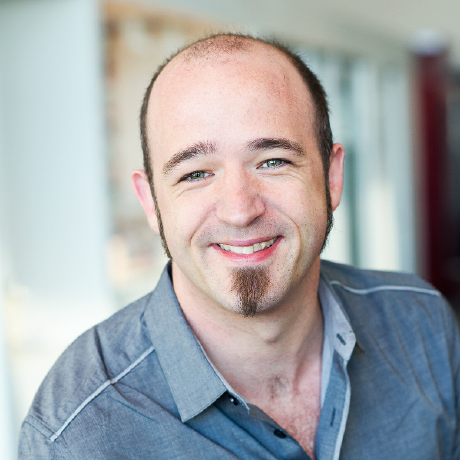
Jono Bacon is a leading community and collaboration speaker, author, and podcaster. He is the founder of Jono Bacon Consulting which provides community strategy/execution, workflow, and other services. He previously served as director of community at GitHub, Canonical, XPRIZE, and OpenAdvantage. His clients include Huawei, GitLab, Microsoft, Intel, Google, Sony Mobile, Deutsche Bank, Santander, HackerOne, Mattermost, SAP, FINOS Foundation, The Executive Center, data.world, Creative Commons, and others. He is the author of ‘People Powered: How communities can supercharge your business, brand, and teams’ and The Art of Community, a columnist for Forbes and opensource.com, founder of the Community Leadership Summit, founder of Conversations With Bacon, and co-founder of Bad Voltage. He is an advisor to AlienVault, Moltin, data.world, Mycroft, Open Networking Foundation, and Open Cloud Consortium.
Mary Garcia (she/her) is Meetup’s Content Manager and editor of the Community Matters blog. When she’s not writing, Mary organizes a swamp fiction book club on Meetup. Find her on LinkedIn.
Last modified on December 13, 2021


